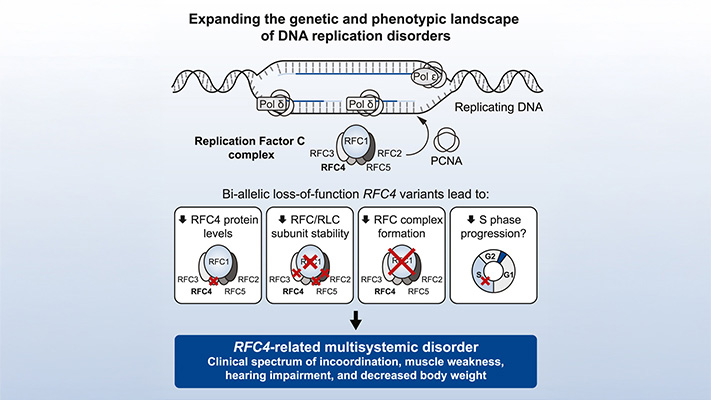NHGRI appoints Erin Ramos as Director of the Division of Genome Sciences
The new year is getting off to a typical genomics-energized start for NHGRI. We just updated our Talking Glossary of Genomic and Genetic Terms with several new entries, including genetic architecture, long-read DNA sequencing, and pangenome. In addition to definitions, this resource includes illustrations and audio recordings from experts at NHGRI. Look out for more terms to come in 2025!
By the simple coincidence of scheduling, I am in the midst of diversifying the venues at which I’ve spoken about genomics and genomic medicine. For example, last month I spoke to a large audience at the Ingleside at King Farm senior living community in Maryland; one resident is former NHGRI employee Mary Glynn, who was instrumental in the institute’s significant expansion in the early 90s. Later this month, I am speaking at The Torah Center in Atlanta, Georgia, where I have been invited by Mendy Lebowitz, a rabbi and an M.D.-Ph.D. student at Emory University School of Medicine. I truly enjoy giving multiple such public talks each year!
Finally, we recently posted videos from our 2024 NHGRI Symposium, including the featured talk from NASA astronaut Kate Rubins, Ph.D., the first person to sequence DNA in space. You can watch Dr. Rubins’ talk and more on NHGRI’s YouTube channel, GenomeTV.
All the best,
![]()
In This Issue
- NHGRI appoints Erin Ramos as Director of the Division of Genome Sciences
- NHGRI researchers discover new genetic condition
- PRIMED Consortium aims to reduce health disparities in polygenic risk assessment
- 16th Genomic Medicine Meeting focuses on host genomics and infectious disease
- NHGRI’s Marlena Fisher receives 2025 Coleman Research Innovation Award
Genomics Research Spotlight
Mapping the relative accuracy of cross-ancestry prediction
Lupi, et al.
Nat. Comm., Dec 2024, PMID: 39622843
In recent years, scientists have created hundreds of polygenic risk scores (PRSs), which are genetic tests that can be used to estimate a person’s risk of developing certain diseases. To calculate a PRS, researchers identify many locations across the genome that have been shown to be associated with a particular disease. This involves analyzing genomic data from thousands of people. Unfortunately, most participants in genomics studies have primarily European ancestry. The lack of representation of other ancestries makes PRS calculations less accurate for people whose ancestors were not European. Researchers from Michigan State University recently developed a new tool called Monte Carlo ANOVA (MC-ANOVA) to better understand how the accuracy of PRSs varies across different ancestry groups. The researchers found that accuracy was related to the regions of the genome involved in that PRS. Certain genomic regions led to greater discrepancies in PRS results among ancestry groups, while other genomic regions were associated with more accurate results for all people. These scores can be improved by including more diverse genomic data in future studies, but this new tool can be helpful for both evaluating existing PRS and improving future genetic tests as well. These improvements will be essential for preventing PRS-related health disparities and ensuring that all people benefit from this potential genomic medicine advance.
This research was funded by the NIH with a grant (RFA-HG-23-017) to Gustavo De Los Campos, who is a Professor at Michigan State University. To learn more about NHGRI funding opportunities, please visit our website.
About The Genomics Landscape
A monthly update from the NHGRI Director on activities and accomplishments from the institute and the field of genomics.
Last updated: January 8, 2025





